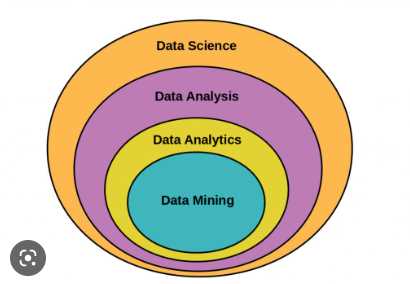Big Data, Data Mining and Data Analytics are all related but distinct concepts that are used to extract valuable insights from large amounts of data. Understanding the differences between these concepts is important for businesses and organizations that want to leverage the power of data to make better decisions.
Big Data
Big Data refers to the massive amounts of data that are generated and collected on a daily basis. This data can come from a wide variety of sources, including social media, IoT devices, and other digital platforms. The sheer volume of data that is generated can make it difficult to process and analyze using traditional methods. Big Data technologies, such as Hadoop and Spark, are designed to handle and process large amounts of data, making it possible to extract insights that were previously impossible to attain.
Data Mining
Data Mining is the process of extracting patterns and insights from large amounts of data. This is done by using advanced algorithms and techniques to uncover hidden relationships and patterns in the data. Data mining can be used to identify trends and patterns in customer behavior, predict future events, and identify potential security threats. Data Mining can be applied to a wide variety of data types, including structured, semi-structured, and unstructured data.
Data Analytics
Data Analytics is the process of analyzing data to extract insights and make better decisions. Data analytics can be used to identify patterns and trends in data, predict future events, and identify potential security threats. There are several different types of data analytics, including descriptive analytics, which is used to summarize data, diagnostic analytics, which is used to identify the root cause of a problem, and predictive analytics, which is used to predict future events.
Data visualization is an important aspect of data analytics, it helps to make insights more understandable and actionable by presenting the information in a graphical format. Data visualization tools like Tableau, Power BI, and others are widely used to create interactive dashboards, charts, and maps that help to make data more accessible and understandable.
Benefits
One of the biggest advantages of using Big Data, Data Mining, and Data Analytics is the ability to make data-driven decisions. By analyzing large amounts of data, businesses can gain valuable insights that can be used to improve operations, increase revenue, and reduce costs. For example, by analyzing customer data, businesses can identify patterns in customer behavior, such as which products are most popular, which promotions are most effective, and where customers are located. This information can then be used to develop more effective marketing strategies, improve customer service, and optimize inventory levels.
Another important advantage of Big Data, Data Mining, and Data Analytics is that it can be used to improve the customer experience. By analyzing customer data, businesses can identify customer preferences, pain points, and feedback. This information can be used to improve the customer experience by providing more personalized service, offering more relevant products and services, and addressing customer complaints more effectively.
In addition, Big Data, Data Mining, and Data Analytics can be used to identify and mitigate security threats. By analyzing large amounts of data, businesses can detect suspicious activity and take action to prevent fraud and cyber attacks. This can help to protect sensitive information and ensure that customer data is kept secure.
Overall, Big Data, Data Mining, and Data Analytics provide businesses with valuable insights that can be used to improve operations, increase revenue, reduce costs, improve the customer experience and mitigate security threats. Businesses that want to stay competitive in today's fast-paced business environment must be able to effectively leverage the power of data.
Wrap Up
Big Data, Data Mining, and Data Analytics are all related but distinct concepts that are used to extract valuable insights from large amounts of data. Big Data technologies are designed to handle and process large amounts of data, making it possible to extract insights that were previously impossible to attain. Data Mining is the process of extracting patterns and insights from large amounts of data.
Data Analytics is the process of analyzing data to extract insights and make better decisions. Data visualization is an important aspect of data analytics, it helps to make insights more understandable and actionable. Businesses and organizations that want to leverage the power of data must understand the differences between these concepts and how to use them effectively.




Leave Comment